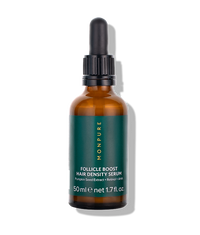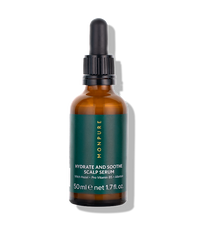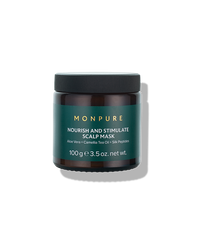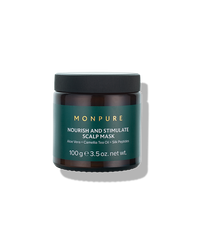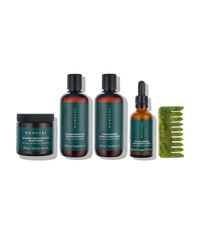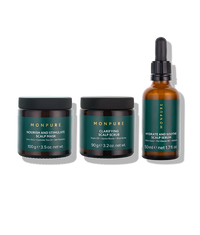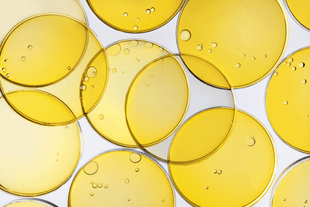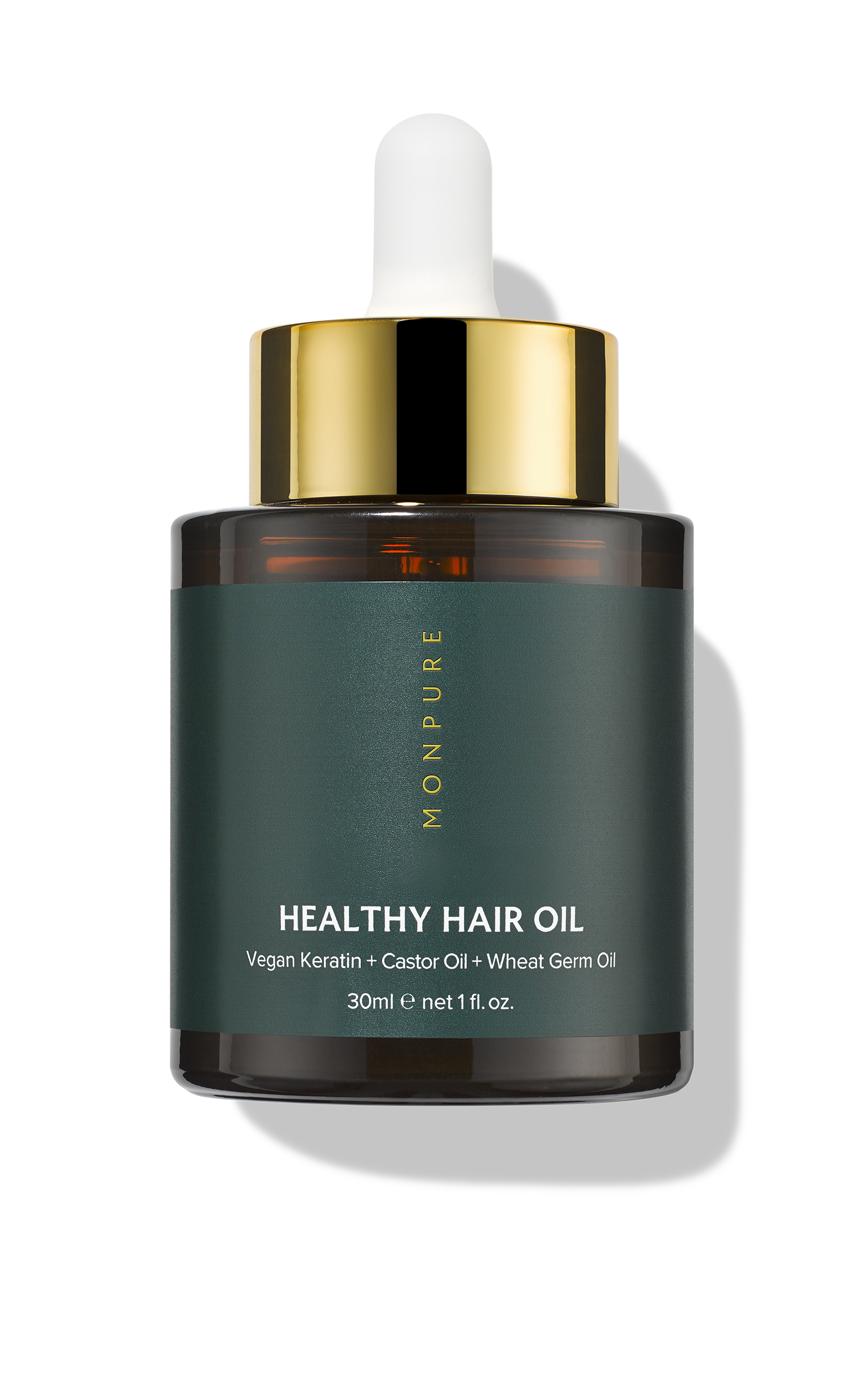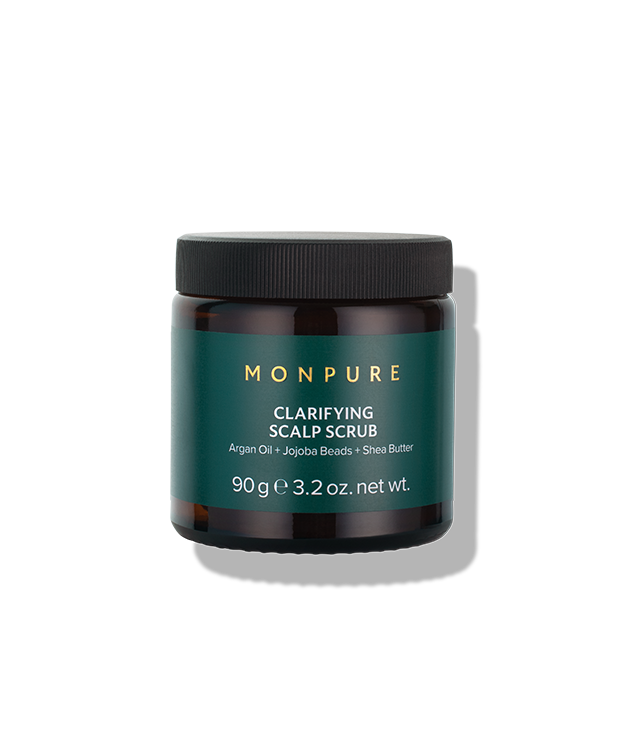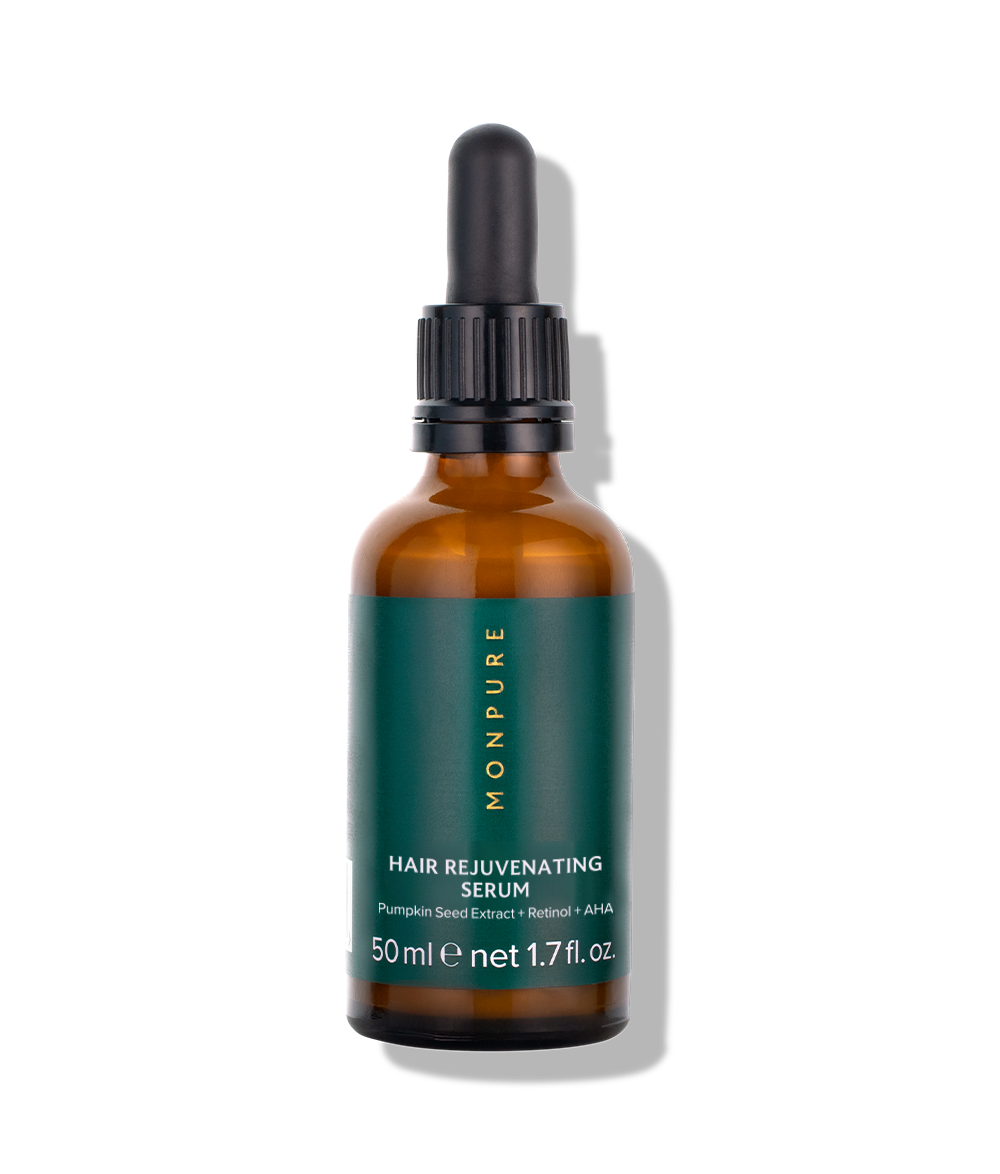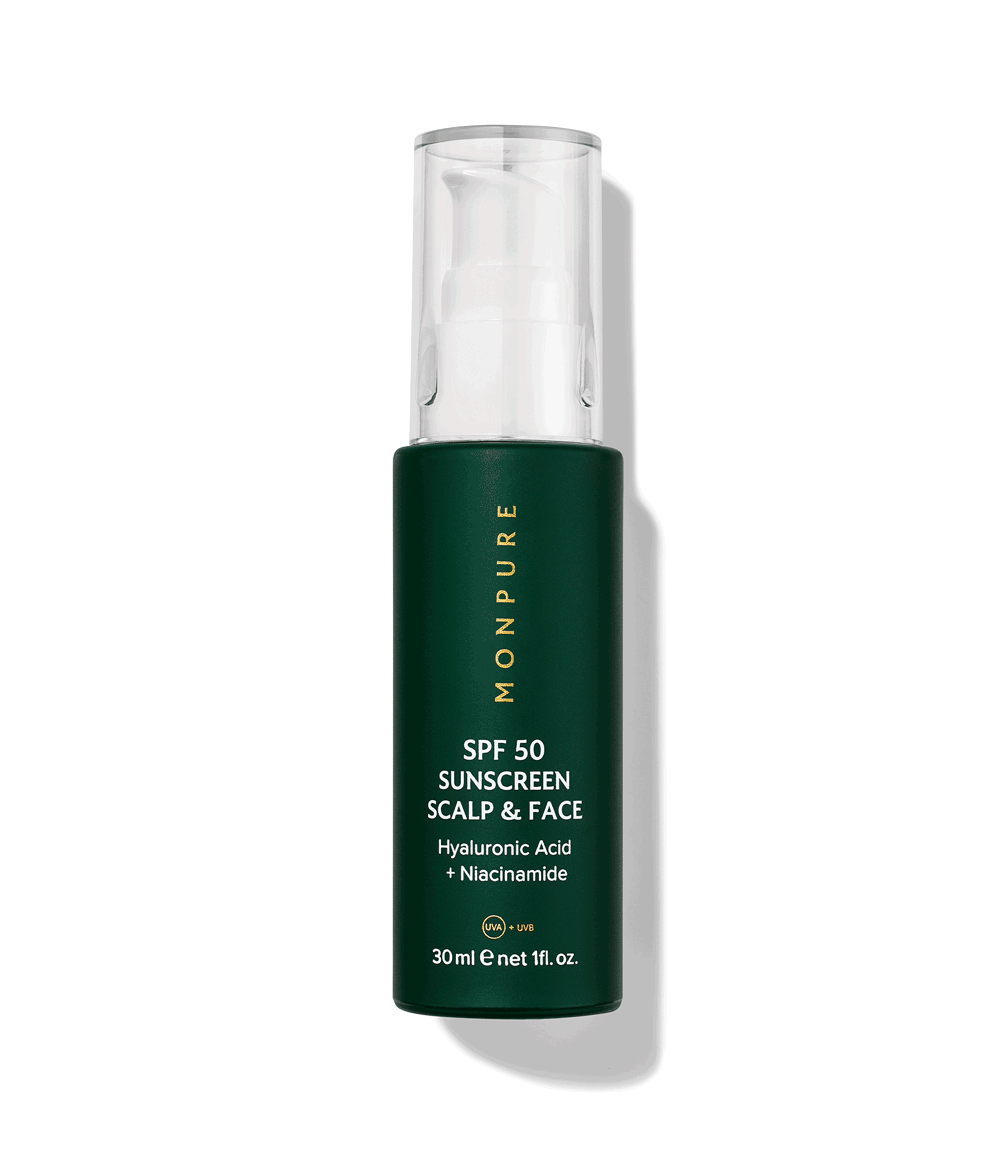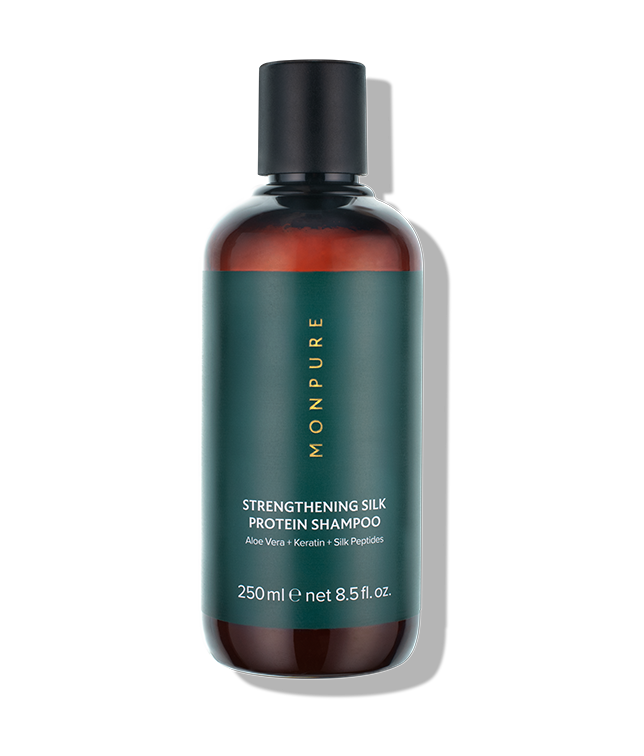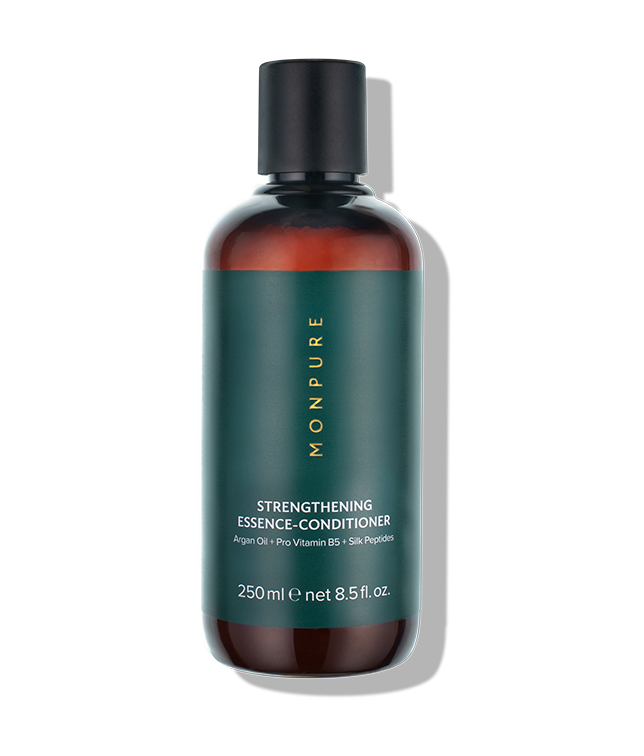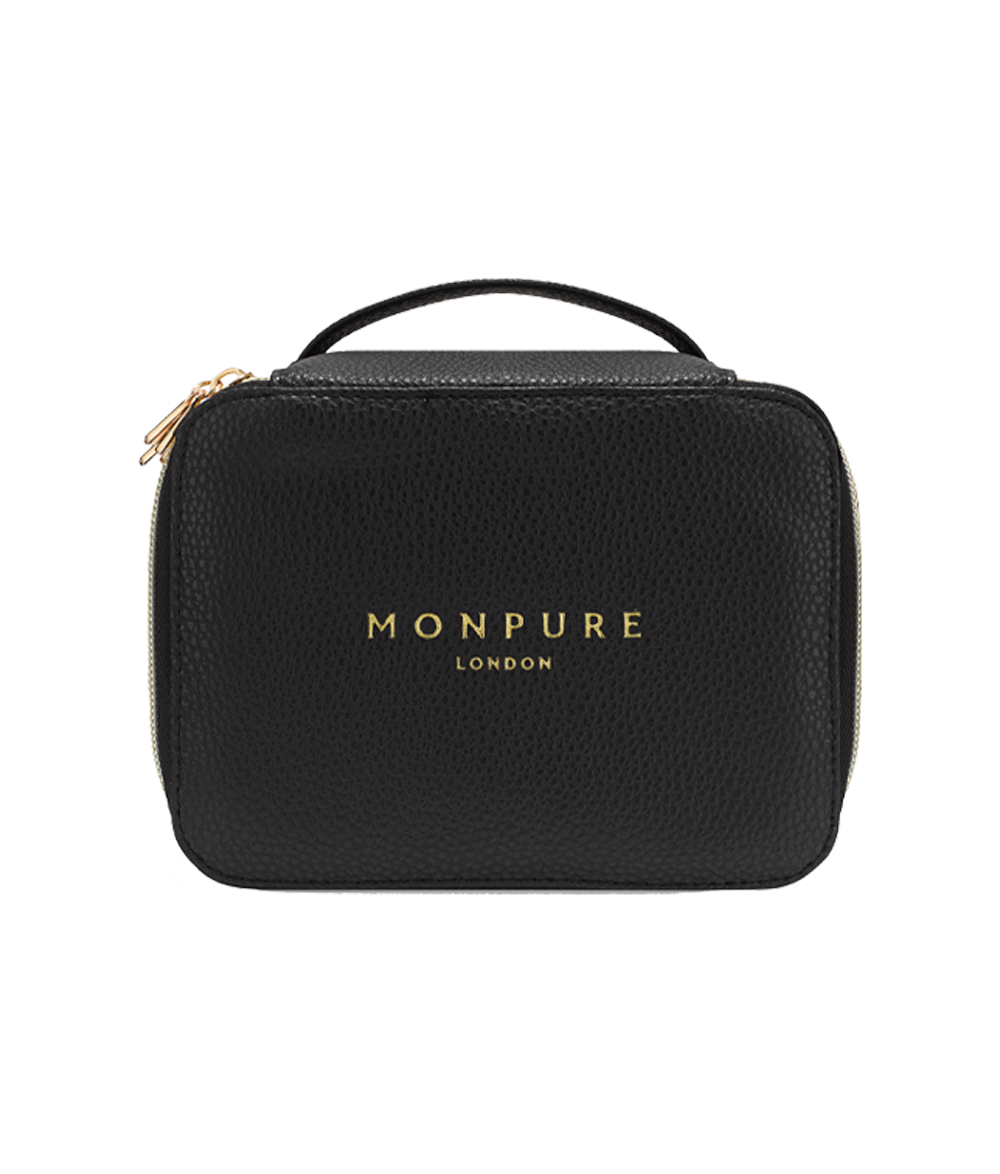What is hair porosity?
Getting to the bottom of your hair porosity is an essential step in finding the perfect regime for you. But what is hair porosity?
Simply put, hair porosity level refers to your hair’s ability to retain and absorb moisture, and can be broken down into three categories: low, normal and high.
-
Low porosity hair has cuticles that are tightly bound together.
-
Normal porosity hair has cuticles that are less tightly bound.
-
High porosity hair has cuticles that are more widely spaced out across the hair shaft (1).

To understand the concept of hair porosity, is it useful to have a better understanding of the structure of the hair. The hair consists of three layers:
-
The cuticle: the robust, protective outer layer of the hair strand that is composed of smaller cuticles that overlap (think of the way that shingles successively overlap on a roof).
-
The cortex: the thickest layer of the hair shaft that contains fibrous proteins (keratin) and the pigment that gives hair its colour.
-
The medulla: the soft, central structure of the hair shaft (2).

Healthy and hydrated hair requires water, oils and other moisturising elements to pass through the cuticle and into the cortex. This is where hair porosity comes into play. If the cuticles are tightly bound, as with low porosity hair, it is difficult for water and oils to penetrate into the hair.
Conversely, if the cuticles are too widely spaced, as with high porosity hair, it is more difficult for the hair to retain moisture and maintain hydration.
What causes hair porosity level?
An individual’s hair porosity, that is, its ability to absorb and retain moisture, is predominantly determined by genetics. However, genetics are not the only contributing factor. So, what else can influence hair porosity?
-
Damage through heat styling, bleaching and stripping your hair with harsh products can all damage hair over time, leading to hair cuticles becoming increasingly open and raised. This hinders the hair's ability to retain moisture.
-
Excess exposure to UV rays can also increase hair porosity.
How can you determine your own hair porosity? Let’s put it to the test
One of the simplest and fastest ways to determine your hair porosity at home starts with a glass of water and a single strand of hair.
-
Start by giving your hair a gentle brush or comb to release strands that are shedding.
-
Take a strand of hair and drop it into the glass of clear water.
-
Low porosity hair will float, normal hair porosity will float and then begin to sink slowly, while high porosity hair will sink immediately.
Breaking down the characteristics of your hair porosity level
Low Porosity
Cuticles are tightly packed, making it more difficult for moisture to penetrate the hair shaft. This may mean:
-
Waxy products tend to sit on the surface of the hair shaft and don’t absorb with ease
-
It is difficult for water to saturate the hair when washing
-
It takes hair a long time to air dry
Normal Porosity
Cuticles are neither too close together, nor too spaced out. Moisture can penetrate the hair with ease, and moisture can also be retained effectively. This may mean:
-
Hair is easy to style, and holds styles for a while.
-
Hair doesn’t take too long to air dry
-
Hair takes colour easily
High Porosity
Cuticles have gaps of spaces between them, meaning that moisture is easily absorbed into the shaft. However, this hair type doesn’t retain moisture for long. This may mean:
-
Water and moisturising products are swiftly absorbed
-
Hair tends to be frizzy or dry
-
Hair tends to break easily
-
Hair air dries quickly
The MONPURE Guide To Treating Your Hair Porosity
Understanding your hair porosity level is essential to finding the regime that works best for you. No matter your hair porosity, there are specific ingredients and tips you can implement that will maximise your healthy-hair results.
Tips for Low Porosity Hair
Opt for formulas containing lightweight ingredients with smaller molecules, as well as humectants, that can more effectively absorb into the tightly-bound cuticle (3). Humectants are water-loving ingredients that draw moisture into the hair like a magnet. Some key ingredients to look out for include:
-
Glycerin
-
Coconut oil
-
Grapeseed oil
The entire MONPURE range is infused with humectant and emollient ingredient, glycerin, a lightweight agent that pulls moisture from the environment to deeply penetrate the scalp and hair - which is ideal for low porosity hair.
MONPURE’s Strengthening Silk Protein Shampoo, Strengthening Essence-Conditioner and Clarifying Scalp Scrub are all imbued with lightweight coconut oil, which works to neutralise scalp irritation, replenish hydration and shine, and effectively deliver moisture to finer and low porosity hair strands.
For low porosity hair, is it best to apply conditioner to wet hair, as the dilution allows the product to be more effectively absorbed into the shaft.
Grapeseed oil, found in MONPURE’s Follicle Boost Hair Density Serum, is an extremely lightweight oil, ideal for low porosity hair. It is a fantastic choice for oily scalps and fine hair too, as it aids in sealing in moisture without weighing the hair down.
Tips for High Porosity Hair
Opt for formulas containing butters and oils that will bolster the moisture retention in your hair, as well as leave-in treatments or conditioners. Moreover, high porosity hair requires ingredients that will fortify the structure of the cuticle - think proteins-rich solutions. It is also best to avoid very hot water when shampooing hair with high porosity, as hot water can further lift the cuticle and inflict damage (4). Some key ingredients to look out for:
-
Vegan Silk Peptides
-
Vegan Keratin
-
Shea Butter
MONPURE’s pioneering ingredient, vegan silk peptides, are infused in our Shampoo, Conditioner, Scalp Mask, and Follicle Boost Hair Density Serum. This revolutionary alternative to silk peptides delivers a physical and breathable “second-skin” to the hair and scalp. As high porosity hair is more susceptible to damage, this ingredient works to protect against external aggressors such as pollution, sea or chlorinated water, irritants and bacterial adhesion.
In fact, vegan silk peptides improve carbon particle removal up to 26%. Additionally, the significant protective properties of this ingredient improve hair colour protection by 35%, as well repair thermal damage by 72%. Vegan silk peptides also improve the hair’s smoothness and shine, leaving it silky to the touch.
High porosity hair requires an ample dose of protein, which aids in rebuilding its structure and repairing damage. MONPURE’s Strengthening Silk Protein Shampoo contains vegan keratin, which features hydrolyzed proteins derived from wheat, corn and soybeans. Introducing vegan keratin into a high porosity hair routine will rebuild damaged follicles, strengthen strands, boost shine and protect against thermal breakage.
Shea butter, which is a hero ingredient in MONPURE’s Clarifying Scalp Scrub, is an effective nourishing and softening ingredient for high porosity hair. This nut extract is renowned for its healing properties, with rich infusions of Pro Vitamin A, Vitamin E, Vitamin F and essential fatty acids, all of which moisturise, condition and protect the hair.
Ultimately, understanding your hair porosity is a significant step in helping you better treat, manage and care for your hair - with the ultimate MONPURE goal of fostering healthier and stronger hair from root to tip.

